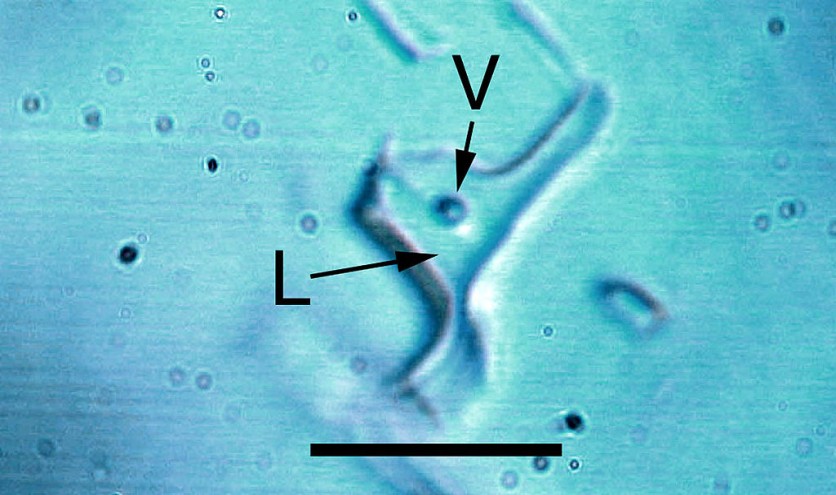An 830-million-year-old rock salt crystal found by geologists may reveal life from other planets if cracked open.

The Geological Society of America researchers announced earlier this month that the ancient halite crystal they discovered has tiny remnants of prokaryotic and algal life inside.
The organisms were found inside microscopic bubbles of liquid inside the crystal, which are also referred to as fluid inclusions. These fluid inclusions could serve as microhabitats for tiny colonies to thrive.
They used several imaging techniques to study the fluid inclusions in the halite from the 830-million-year-old Browne Formation in central Australia which led to the discovery of organic solids and liquids that were consistent in shape, size, and fluorescent response to cells of prokaryotes and algae.
With this discovery, researchers now want to crack open the crystal to see if the ancient life inside is still alive.
Check out this video of fluid inclusions in Permian salt.
Frowned Upon
Opening a million-year-old crystal is being frowned upon, as some think that this could be dangerous.
The study author, Kathy Benison, a geologist as West Virginia University told NPR, "It does sound like a really bad B-movie, but there is a lot of detailed work that's been going on for years to try to figure out how to do that in the safest possible way."
Could It Reveal Life in Different Planets?
Their recent discovery shows that microorganisms can remain well preserved in halite over hundreds of millions of years. As a result, it carries implications for the search for other life in different planets in the universe.
The possibility of similar biosignatures could be detected in chemical sediments from Mars, where huge salt deposits have been identified as evidence of ancient liquid-water reservoirs.
It may seem far-fetched that the microorganisms inside the crystal are still alive, living prokaryotes have been extracted from halite that dates back 250 million years previously. This means that it is not unlikely that the microorganisms could survive 850 million years.
In the study, the researchers note that the "Possible survival of microorganisms over geologic time scales is not fully understood. It has been suggested that radiation would destroy organic matter over long time periods, yet Nicastro et al. (2002) found that buried 250 million-year-old halite was exposed to negligible amounts of radiation."
Bonnie Baxter, a biologist at Westminster College in Salt Lake City who wasn't involved in the study commented and said that the risk of unleashing an apocalyptic pandemic was relatively low.
"An environmental organism that has never seen a human is not going to have the mechanism to get inside of us and cause disease. So, I personally from a science perspective, have no fear of that."
Could this finally be the answer to uncovering the mysteries of the universe? Perhaps, we will finally find hardcore evidence that it's not only humans who are living in the Universe.
Related Article: NASA TESS Satellite Discovers Hidden Exoplanets Within a New Planetary System: Some of Them Could Even Support Life!
This article is owned by TechTimes
Written by April Fowell
ⓒ 2025 TECHTIMES.com All rights reserved. Do not reproduce without permission.
![Best Gaming Mouse For Gamers With Smaller Hands [2025]](https://d.techtimes.com/en/full/461466/best-gaming-mouse-gamers-smaller-hands-2025.png?w=184&h=103&f=6fd057ef777bd39251d4e7e82e9b23f1)


![Best iPads that Students Can Use in School [2025]](https://d.techtimes.com/en/full/461431/best-ipads-that-students-can-use-school-2025.jpg?w=184&h=103&f=516289300e12e9647ef3d5bd69f49b70)
